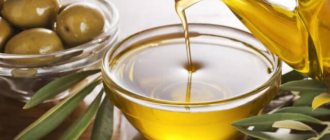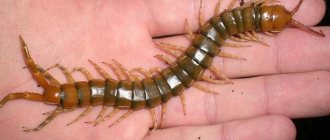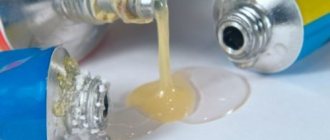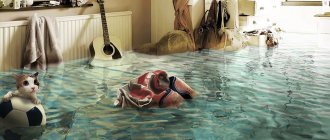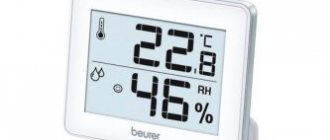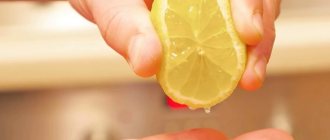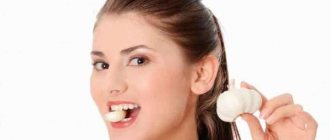A powerful draft during and after cleaning will help remove the unpleasant smell of chlorine from the apartment. Containers with aroma-absorbing substances are placed in the room. Unpleasant odor can be quickly removed from the skin of your hands using lemon or vinegar.
Bleach, while indispensable as the best cheap disinfectant, has many harmful effects on human health. For example, while killing harmful bacteria, it can cause irreparable harm to the lungs if its vapors are inhaled. But besides this, after cleaning there remains a persistent acrid smell in the room. Therefore, we will figure out how to remove the smell of bleach in the apartment and from your hands.
How to neutralize the smell of whiteness
When your hands smell like bleach, you can deal with it with simple remedies that are available everywhere. You don't even have to go to the store to get them.
Vinegar
Acetic acid solution is a popular and effective odor neutralizer. But 2 things are important in use:
- vinegar is aggressive to the skin and must be handled with caution;
- After the procedures, you need to lubricate the skin with a softening cream.
It is enough to add 2 tbsp to a container with 1 liter of warm water. l. vinegar and mix well, and then hold your hands in this bath for a few minutes. Then wipe with paper napkins so as not to spoil the towel. The smell should disappear.
For delicate hand skin, table vinegar is sometimes replaced with apple cider vinegar (in the same proportions), but it is less effective, and one procedure is not enough - you have to repeat it several times.
Ammonia
An alternative to table vinegar is ammonia. It is also suitable in the form of baths, and you need to add about the same amount - 1-2 tbsp. l. for 1 liter of water. It is better to boil water, add ammonia, stir, and then let it cool. Alcohol will dissolve faster in hot water.
The value of ammonia is that, although it has a strong odor, it quickly dissipates. At first, alcohol will replace the aroma of bleach on your hands, but after washing your palms with soap, everything will disappear without a trace.
Tomato paste
The acid contained in tomatoes copes well with unwanted odors. It is most convenient to use tomato paste. A little product is rubbed between the palms and on the outside.
Soda
Baking soda is used in 2 ways:
- Mix 2 tbsp. l. soda with 100-150 ml of water and prepare a paste-like liquid. It is rubbed between the palms, then rinsed. When necessary, repeat several times.
- Add 2-3 tbsp. l. in a bowl with 1 liter of warm water and stir until dissolved. If the smell of bleach is not too strong, then a bath with soda can successfully get rid of it.
Water
Often, a small concentration of chlorine is used to disinfect tap water. This amount of this substance is not dangerous to human health, but while drinking it is difficult to get pleasure from the water, since it still has an unpleasant odor. To get rid of it, activated carbon is added to the water, and after 15 minutes the aroma goes away.
Household chemicals
There are many things on the household chemicals shelf that can effectively eliminate bleach odors. But most should not be touched with unprotected hands. Among household chemicals, only soap is recommended to solve the problem.
Citrus based soap
Both types of toilet soap are suitable:
- bar;
- liquid.
It is better that the soap contains extracts of orange, lemon, and other citrus fruits. These natural ingredients cope better with odors than others.
Although, in the absence of citrus soap, anything with a strong aroma will do. Diligently washing your hands with soapy foam (sometimes several times in a row) helps to cope with the most intrusive odor.
Security measures
Ideally, of course, it is better to replace chlorine-containing products with safer household chemicals. The effectiveness of using analogues, as a rule, is in no way inferior to “Whiteness”. But if for some reason you decide to use bleach, you must take the following precautions:
- Before you begin, make sure the area is well ventilated.
- Wear high-quality gloves made of thick rubber on your hands.
- Also wear a respirator to avoid chlorine chemical poisoning. If you don’t have one at hand, make a bandage out of gauze.
- “White” should be kept away from pets and small children.
If you feel any signs of poisoning, you should immediately go to the hospital.
Using bleach at home for disinfection and cleaning has both positive and negative effects. Before using “Whiteness” for economic purposes, weigh the pros and cons.
The pungent aroma of bleach, which “sticks” to the skin for a long time, is a problem familiar to everyone who has at least once done hand washing or disinfection. Often rubber gloves do not become an obstacle to him. Without help, the smell takes a long time to dissipate. Therefore, as part of its neutralization, special measures have to be taken.
How to get rid of chlorine odor naturally
Industrial stores sell chemicals that eliminate odor. They are very effective in cleaning a variety of surfaces, but contact with skin is strictly not recommended. When cleaning your palms, you should turn to natural “neutralizers.”
The advantages over chemicals are listed in the table.
| Natural remedies | Industrial chemistry |
| Do not cause harm to the skin, or do (pure juice), but insignificant | Causes irritation |
| They smell nice or don’t smell at all. | It has its own pungent smell. It’s nicer than bleach, but it can also “eat away” |
| There's something in the apartment | Need to buy |
Lemon, lime juice
Any citrus juice can eliminate odors. But it’s better to use lime or lemon juice, because it contains more acid. Here are 2 ways to use:
- Rub half of the fruit onto the skin. It is very effective, but caution is required. After all, direct contact with citric acid will be accompanied by pain and irritation if microdamages from bleach remain on the skin.
- The juice of 1 fruit is squeezed into a container with heated water (1 liter) and stirred. This bath is in no way inferior to a vinegar bath.
Orange peel
Orange peel has the unique ability to cleanse everything in the world.
Orange peels also help with the smell of bleach. Can:
- Heat the peel of 1 fruit in a clean, dry frying pan, avoiding burning. It is enough to bring the temperature of the crusts to 50 °C. Wrap in gauze and rub the skin of your palms for a few minutes.
- Boil the peel of 1 fruit in 1 liter of water, then cool the broth and remove the peels. Use as a bath.
Lotions and oils
A natural lotion aimed at combating body odors can be easily purchased at the pharmacy. The drug is also good at removing foreign odors remaining on the skin. It should be used according to the instructions on the package, and the result will be excellent.
Essential oils also play the same role. In addition to their main purpose, they cope well with strong odors (including bleach and tobacco). The following oils are most effective:
- citrus;
- conifers;
- lavender;
- bergamot.
To safely apply oils to the skin, you need to mix them with a base: neutral cream, milk, wax. The generally accepted proportions are 10-20 drops of ether per 30 ml of base. The oil packaging may provide more accurate information.
Essential oils are used in 2 ways:
- while bathing in the bathroom - mixed with base oil, rubbed into clean, damp skin of the hands without any residue of soap or shower gel;
- as a rubbing - apply a mixture of ether and base onto a cotton pad and rub into the dry skin of the palms.
Petals of garden plants
Perfumes are based on plants for a reason. Most flowers smell very nice. But perfumes and eau de toilette only mask the smell, while flower petals in their pure form can remove it.
Can:
- Rub a few petals of a fragrant flower between your palms. Hyacinth, lily, matthiola, chrysanthemum, phlox, and rose are well suited.
- Make a decoction. 5-10 petals (the larger they are, the less you need) are placed in 1 liter of water and put on fire. You should not bring it to a boil - the flowers will release their aroma at the slightest heating. When the liquid becomes warm (up to 60 °C), it is used as a bath.
Getting inside
Poisoning by white vapors is possible when laundry is boiled for a long time, and less often when cleaning indoors. High concentrations of chlorine in the air irritate the mucous membranes of the upper respiratory tract, eyes and nose. There will be no severe poisoning from inhalation of sodium hypochloride at home.
Symptoms of irritation of the larynx, trachea and bronchi are sore throat, sneezing, hoarseness, coughing, sometimes so strong that transient oxygen starvation of the brain develops. Headaches and dizziness occur. With hypersensitivity to chlorine, spasm and allergic swelling of the larynx is possible, which can lead to death. White vapors, irritating the mucous membrane of the eyes, can cause redness of the sclera and conjunctivitis.
Whiteness must be washed off from mucous membranes
First aid to the victim is to remove him from the zone of influence of sodium hypochlorite and ventilate the room. It is necessary to remove the remaining irritant from the mucous membranes: rinse the eyes with running water, gargle. In case of severe poisoning, soda inhalations are indicated. The simplest method is to breathe soda vapor over a hot alkaline solution. In the most severe cases, you should immediately consult a doctor.
When Whiteness gets into the gastrointestinal tract, symptoms of burns to the mucous membranes and signs of poisoning with caustic substances develop. The pain syndrome begins in the oral cavity. When liquid chlorine enters the esophagus and passes through the natural narrowings of the esophagus, a spasm develops. The victim notes increased pain, first in the throat, then behind the sternum and then in the epigastrium.
Irritation of the gastric mucosa leads to a reflex contraction of smooth muscles and the appearance of the urge to vomit. As a result of the destructive effect of Whiteness on stomach tissue, an admixture of blood is found in the vomit. Vomiting does not eliminate the necrotic changes that have occurred and does not bring relief. In case of accidental use of undiluted solution, serious gastric bleeding may occur.
20-30 minutes after Whiteness enters the gastrointestinal tract, chlorine is absorbed into the blood and causes general symptoms of poisoning: nausea, nervous and motor agitation, headache. Reaching the excretory system, it affects the kidneys, leading to renal failure. Toxins are not removed from the body and accumulate in the blood. A “vicious circle” arises: the concentration of toxins increases while it is impossible to eliminate them, which is facilitated by damage to the kidney tissue. Signs of intoxication include an increase in body temperature.
Calling an ambulance is mandatory. As an emergency before the doctor arrives, rinse the mouth, lavage the stomach, followed by inducing vomiting. Raw egg whites are added to the rinse, which denatures to absorb toxins.
If sodium hypochloride enters the body through the respiratory tract or digestive tract, it is recommended to consume milk; this product is a natural detoxifying agent.
Useful tips
A few additional tips to help remove the smell of bleach from your palms and cope with other consequences:
- If you accidentally come into contact with bleach, stop working, wash and dry your hands well, and then apply moisturizer. It’s good if the cream contains vitamin E - it speeds up the restoration of damaged cells. Bleach dries out the skin and sometimes causes redness and itching.
- Depending on the composition of a particular brand of bleach, some methods may turn out to be
- When working with bleach, it is recommended to wear rubber gloves. Although protective gloves do not always save you from a pungent odor, they reliably protect the skin of your hands from the harmful effects of chemicals.
- Oxygen bleaches without a strong odor, which are not inferior to ordinary bleach, are common in stores - “Eared Nyan”, “Chistin”, “Milam”, Synergetic, BioLife.
Why is chlorine dangerous when showering?
There is a myth that only drinking and eating soups prepared with chlorinated liquid is harmful. However, long bathing can also be harmful to the body. Carrying out an hour-long procedure can negatively affect human skin. It loses its natural fatty membrane, which protects the epidermis from premature aging. The skin becomes dry, various rashes may appear on it, including allergies.
Precautions for eliminating unpleasant odors
To combat bleach odor, it is important to:
- Many methods dry out the skin and have an aggressive effect on it. Therefore, after the procedures it is worth treating your hands with moisturizer.
- Do not use hot water. High temperatures cause the pores to expand and the scent to penetrate deeper into the skin. The water needs to be heated to a comfortable state, no more.
- With “harsh” products like vinegar and lemon juice, it is important to use moderation. They are generously diluted with water. It is better to repeat the procedure than to harm skin that has already been damaged by contact with bleach.
In which industries is the chemical element used?
A poisonous greenish gas with an unpleasant, pronounced odor is a halogen and belongs to the 17th group of the periodic table. Easily compressed and highly corrosive. At low temperatures (up to -100 degrees) it crystallizes and turns into a solid state. Carbon occurs naturally in the form of diamond and graphite, and is also found in various compounds such as chalk, limestone and marble.
The scope of use is wide:
- Used for the production of polyvinyl chloride, plastics, synthetic rubber. These materials are needed to create linoleum, clothing, shoe soles, insulation for electrical wires, etc.
- For bleaching fabrics.
- In the pulp and paper industry.
- In metallurgy for the production of pure metals (titanium, niobium, zirconium).
- In the chemical industry for the production of medications, berthollet salt, hydrochloric acid, poisons, bleach, etc.
- For the production of insecticides (means for killing insects on agricultural fields).
- In laboratory practice.

